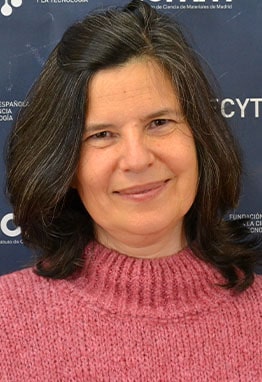Belén Valenzuela
ICMM-CSIC, Madrid, Spain
A toy Landau model for illustrating learning and unlearning of nociplastic pain
When: 12:00-13:00 CET, March 3rd, 2024
Where: Salon de Actos, ICMM-CSIC, Campus de Cantoblanco, Madrid
Chronic pain is increasing at an alarming rate specially among young people and kids. This disturbing situation has increased the research interest in gaining a deeper understanding of chronic pain. Physiologically, nociplastic pain has been defined as a significant component of chronic pain not linked to tisular damage but to a nocive plasticity pattern of the nervous and immune system. From phenomenological cognitive sciences, there is compelling evidence that the consolidation of nociplastic pain is a complex, nonconscious learned process of threat perception that gives rise to maladaptive loops. Embodied neurobiological pain education is emerging as a promising approach to reduce the perception of threat which leads to a decrease of symptom intensity and frequency, improved functionality and eventual symptom alleviation. However, this approach is not well known among clinicians and society at large, creating a communication problem that unfortunately perpetuates the suffering of the patients. We propose a toy Landau model to describe the learning and unlearning process of nociplastic pain, aiming to clarify this complex situation and facilitate communication across different sectors of society. Nociplastic pain corresponds to a first-order transition, with attention more likely in the alert-protection state than in the trust-explore state. Two appealing results of the model are that the perception of the critical context depends on personal history regarding the symptom and that maladaptive loops are formed when there is alarming learned historical information about the symptom, along with confused and contradictory expert information, as seen in nocebo messages. Learning and unlearning in the model correspond to a change in control parameters that can weight more the alert-protection state, the trust-explore state, the uncertain state or the neutral state. This description clarifies why neurobiological education is the ground therapy from which others must be built to embody the accesible, clear, and trustworthy information. The model could be used to address other mind-body syndromes.
YouTube link: https://www.youtube.com/watch?v=i7mHqDFsc_4

